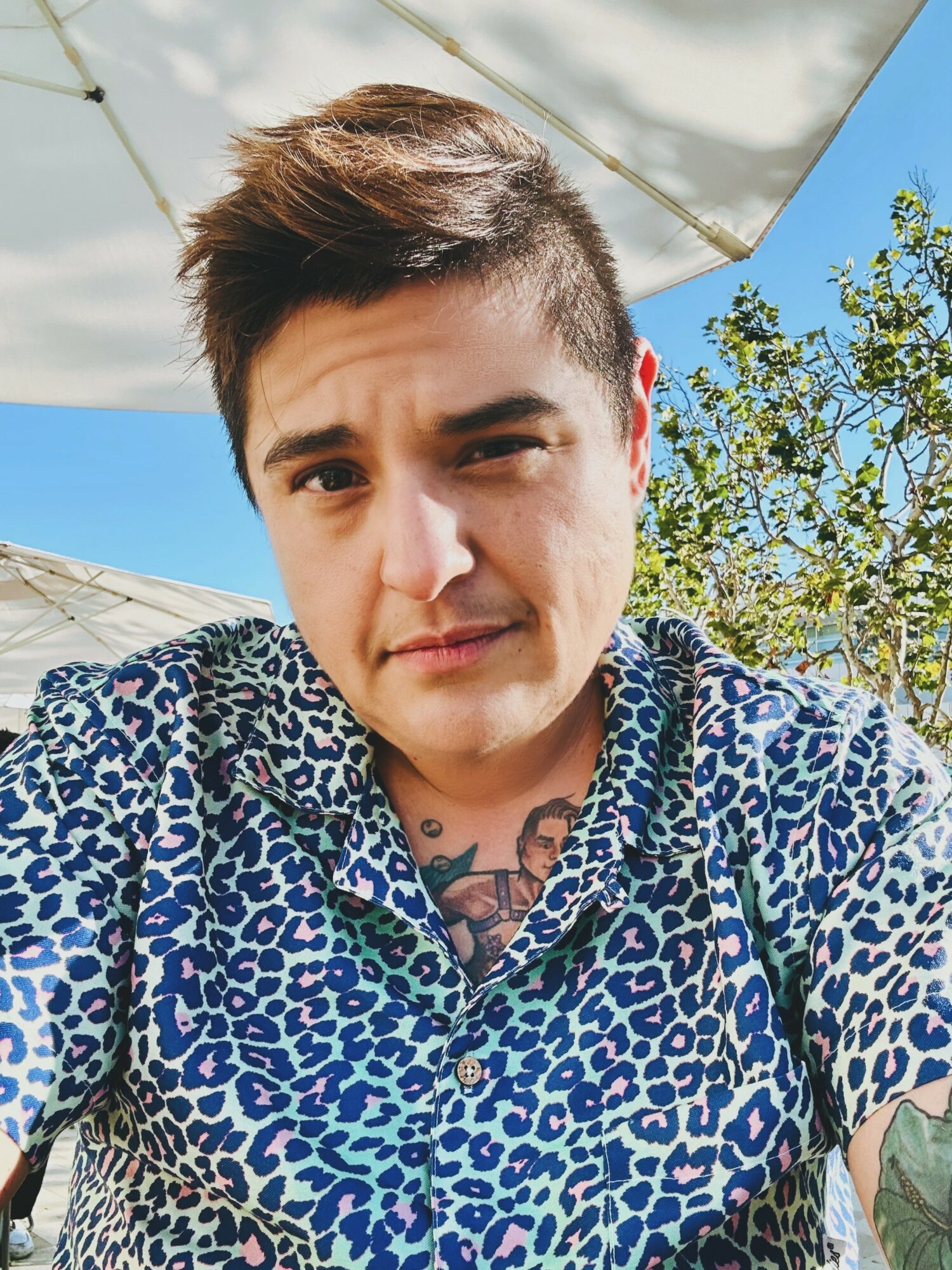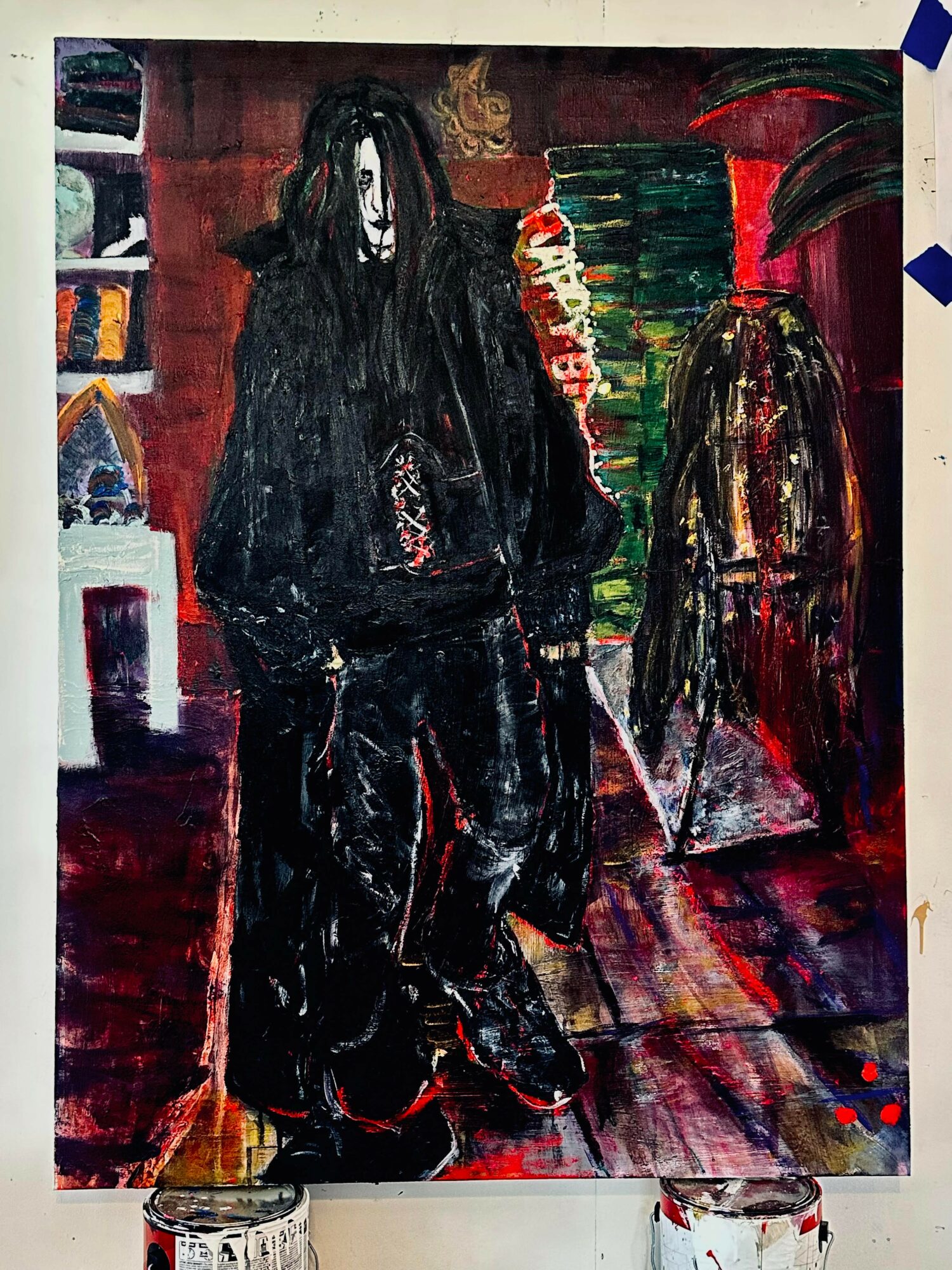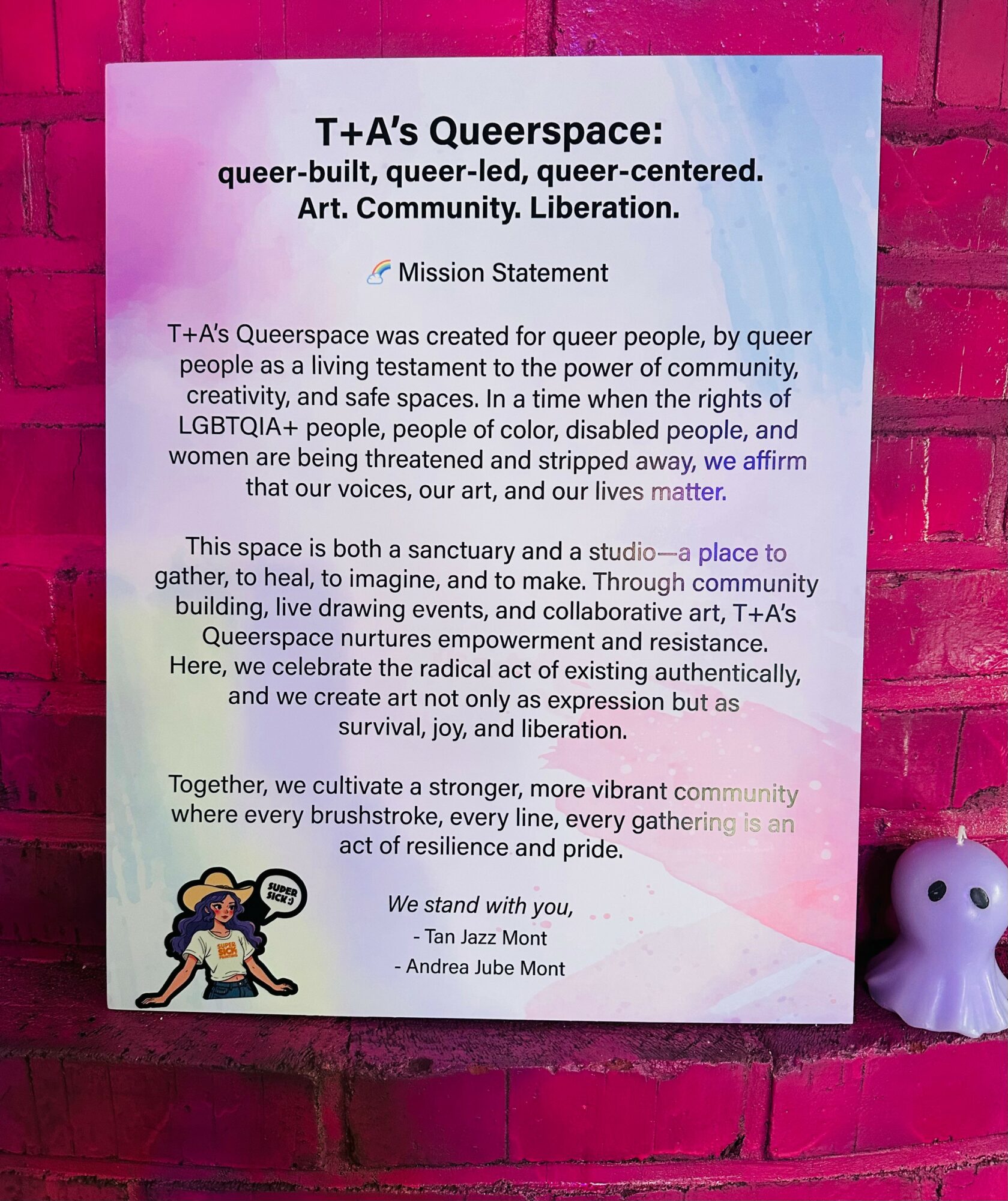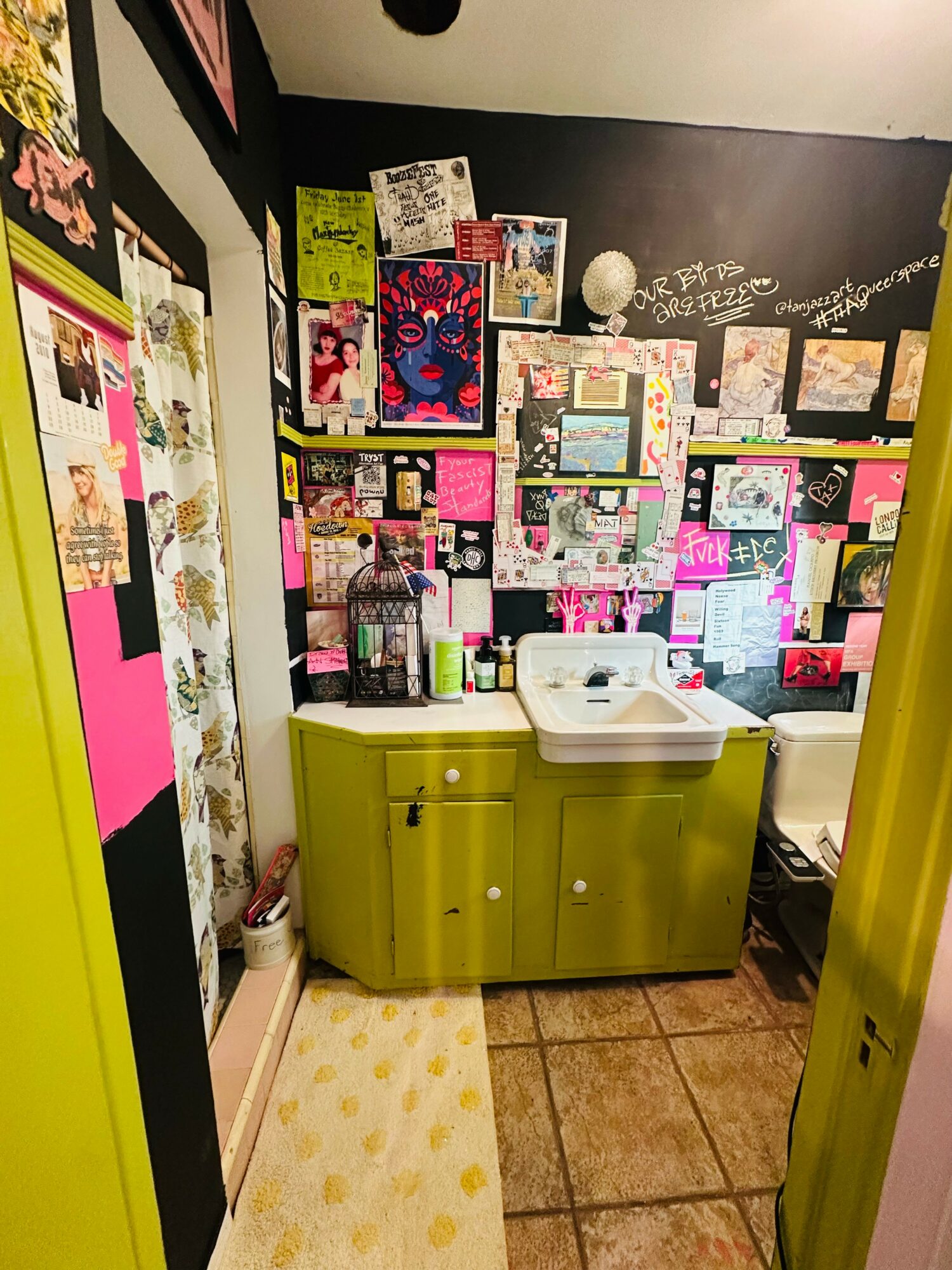

Tan Jazz Mont shared their story and experiences with us recently and you can find our conversation below.
Hi Tan Jazz, thank you for taking the time to reflect back on your journey with us. I think our readers are in for a real treat. There is so much we can all learn from each other and so thank you again for opening up with us. Let’s get into it: What are you most proud of building — that nobody sees?
I’m most proud of a project my wife and I built called T+A’s Queerspace. We created it during a really tense political moment-when trans lives were under threat again and the climate felt increasingly hostile, especially after Trump took office. Well, it still is. We wanted to offer something positive and tangible: a queer-centered creative space that feels safe, affirming, and full of life.
It’s part sanctuary and part meeting space where queer youth and friends can gather for art nights, book clubs, or even just to escape for a while. As a professor, I often have students confide in me about not feeling supported at home, so creating this space became deeply personal. I also was not raised in an accepting environment. T&A’s Queerspace is not public in the corporate sense, but I want enough people to know about it so that they can have moments of safety, creativity, and belonging.
Can you briefly introduce yourself and share what makes you or your brand unique?
I’m Tan Jazz Mont — a queer artist and professor based in Southern, CA. I reside in the Inland Empire. My work lives at the intersection of autobiography, social commentary, and abstraction, using painting and sculpture to explore identity, belonging, and transformation. I draw on my Hispanic heritage and lived experience to create work that’s both deeply personal and quietly political — often balancing humor, hope, and a touch of absurdity.
Alongside my studio practice, I teach visual arts at several colleges; I have been an adjunct professor for ten years. I also help lead community-based programs that use art as a tool for healing and empowerment, especially among formerly incarcerated women and queer youth. What makes my work special is its focus on connection — turning vulnerability and storytelling into acts of resilience. Empathy, although not popular in Corporate America, is what is needed most in our world right now. Whether it’s through my art or through T + A’s Queerspace, I aim to build environments where authenticity and creativity can thrive side by side.
Thanks for sharing that. Would love to go back in time and hear about how your past might have impacted who you are today. What was your earliest memory of feeling powerful?
One of my first memories of feeling powerful actually comes from my name. I remember asking my dad — I called him “Pop” — why my name was La Tania (with an actual space between the words). He said, “Your mom wanted to name you Tania — she liked that country singer, Tanya Tucker. I liked it too, but I couldn’t let her name you. I’m the man, it’s my word. So I added the La.”
I remember looking at him and saying, deadpan, “I will never go by La Tania again.” And I didn’t — not from first grade all the way until the pandemic, when I finally realized I’d always been transgender; I just didn’t have the language for it back then.
My name is Tan now. I carry that little kid — the one who refused to be named by someone else’s power — with me every day. When I need to remember my strength, I think about that moment and how even then, I knew who I was.
If you could say one kind thing to your younger self, what would it be?
Kid, you’ve got ADHD. You don’t know it yet, but that’s why you stay up all night memorizing vocab terms just to ace tests — chasing perfection because your brain won’t let go. You’ll get frustrated when things don’t click right away, and you’ll think it means you’re stupid. You’re not. Your brain just works differently.
You’ll spend years wondering why you say the wrong thing, why people get upset, why you can’t sit still, why your emotions feel so big. You’ll fight anxiety and depression from the time you’re thirteen. You’ll feel proud one moment, then crushed by criticism the next — that’s rejection sensitivity and emotional dysregulation, not weakness.
I wish I could hug you and tell you: nothing’s wrong with you. You’re not broken. You were raw-dogging life with undiagnosed ADHD for decades — and still showing up, still trying. Being aware is half the battle. You’re gonna lose it sometimes, but you’ll also learn to forgive yourself, and that’s where your real power will come from.
Next, maybe we can discuss some of your foundational philosophies and views? Is the public version of you the real you?
I couldn’t be different even if I wanted to — I’m me all the time. I have too much integrity and too strong a sense of justice (which I’ve since learned is also an ADHD trait) to ever pretend to be something I’m not.
There are moments I wish I could be “more professional.” I once got a talking-to about my email tone — something I didn’t even realize was a thing! I used to equate “professional” with the guy who always wears a suit to work. As an art professor, I don’t wear suits, so I assumed I could write the way I speak — which, for better or worse, is passionate all the time.
I also can’t hide my facial expressions to save my life. Luckily, I’m surrounded by kind, loving, and hilarious people who get me — and that makes all the difference.
Okay, we’ve made it essentially to the end. One last question before you go. Are you doing what you were born to do—or what you were told to do?
I’m absolutely doing what I was born to do. I’ve always been a creative. Pop once told me, “Mija, you better go to college. We have nothing to offer you.” That stuck with me. It’s part of why I became such a perfectionist — I wanted out of the chaos I grew up in. Someday, I’ll write and illustrate a book about it called, Traumemories.
When I got to college, I remember a white classmate asking, “Your parents are cool with you majoring in art?” I was genuinely confused. It hadn’t even occurred to me that I shouldn’t pursue art. I just thought, college will get me where I need to be. Looking back, that innocence makes me smile.
No regrets, though. Perhaps if my hyperfocus were medicine, I’d be a great doctor — but my hyperfocuses have always been creative, independent, and, sure, not always lucrative. I wouldn’t trade it for anything, though. I’ll paint forever. I’ll always be an activist. And I’ll stay Punk till I die.
Contact Info:
- Other: two IG links:
1. @tanjazzart
2.@t_and_a_queerspaceI’m represented by Asher Grey Gallery through Artsy.
Here’s the link: https://www.artsy.net/artist/tania-jazz-mont







Image Credits
Tan Jazz Mont














